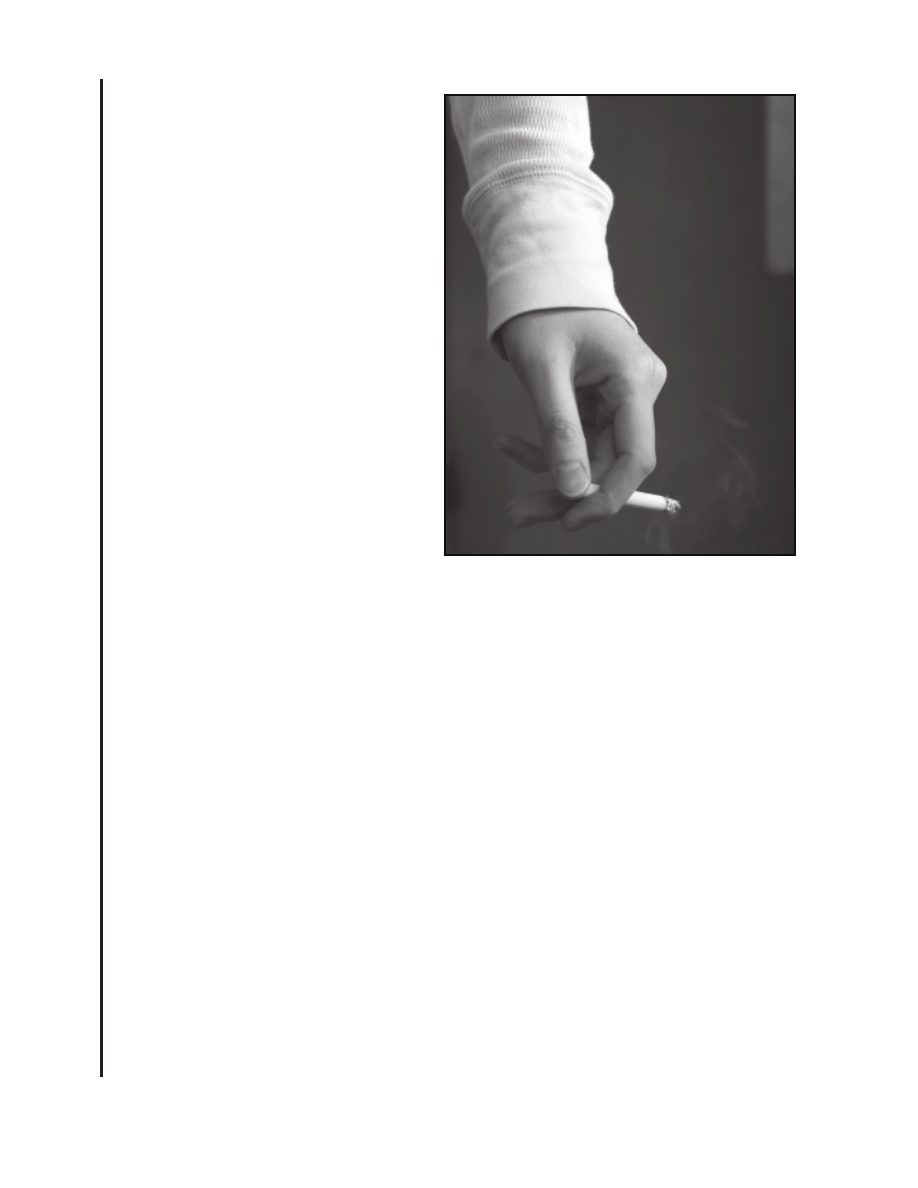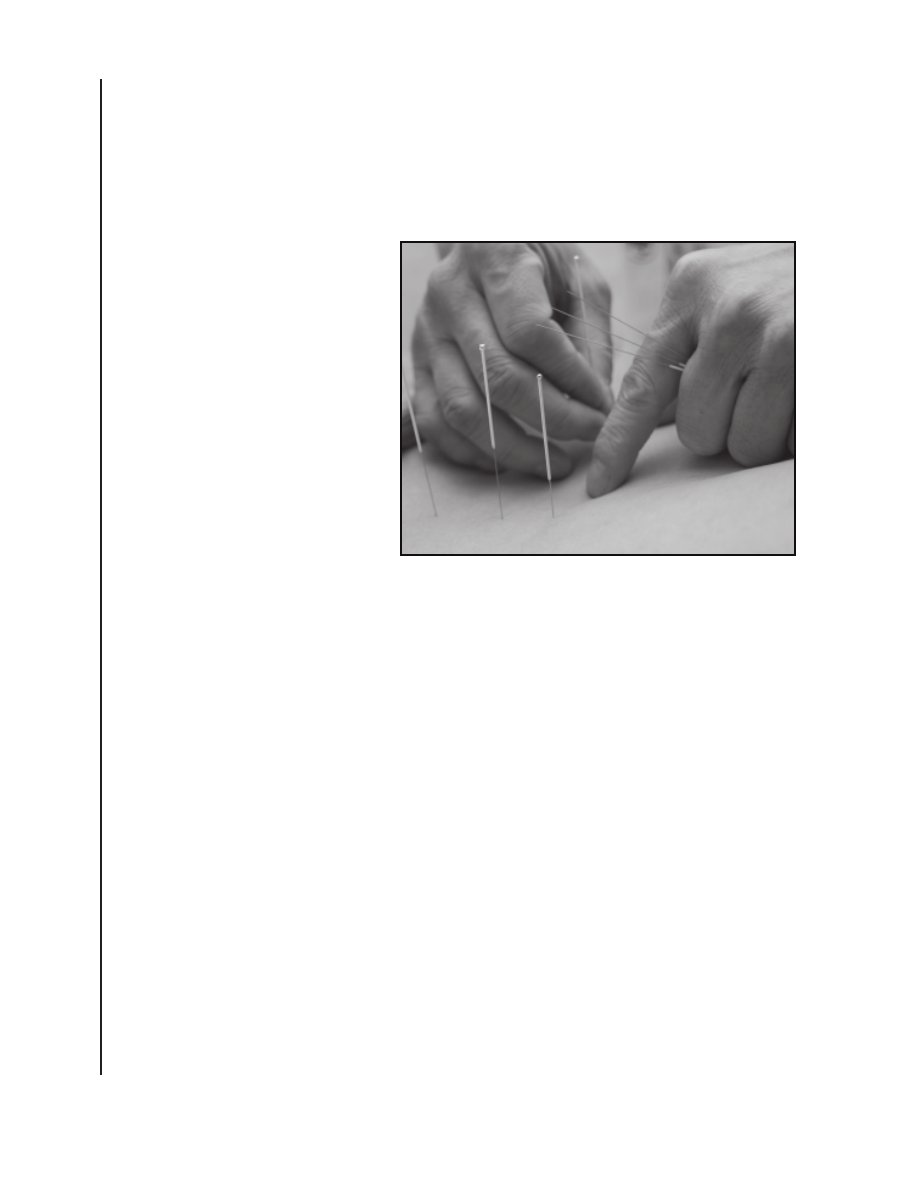ВУЗ: Не указан
Категория: Не указан
Дисциплина: Не указана
Добавлен: 06.12.2020
Просмотров: 1079
Скачиваний: 3

58
Lecture 16: Facts about T
o
xins and Myths about Detox
Yes, there are toxins in our
environment. But does this mean
that the claims made for detox
treatments are legitimate, that
they can remove toxins from the
body? There is no evidence for
the need for routine or nonspeci
¿
c
detox. This is just marketing
hype, a marketing strategy
playing off fears of toxins in the
environment. In case of genuine
toxicity or genuine overdose,
targeted medical diagnosis and
treatment is necessary, not some
nonspeci
¿
c detox product.
Let’s look now at some of the
popular detox treatments that
don’t have medical legitimacy.
For example, there is the colon
cleanse—cleaning toxins out of
your colon or out of intestinal
walls. One version of this is the coffee enema, which claims to clean out
toxins that are collecting and gunking up the intestinal wall. There is no
evidence for toxins or anything clogging up the walls of the intestines. The
intestines continuously move waste through, and everything eventually
comes out. There is no theoretical reason for coffee enemas or other colon
cleanses. This is also not a risk-free procedure. Enemas carry the small but
real risk of perforating the colon.
Another entirely different type of treatment with the same claims of
detoxi
¿
cation is rol
¿
ng. This is a deep, often painful, muscle massage. The
idea is that by squeezing the muscles very strenuously, you will squeeze
out the toxins into the blood, and then they’ll be removed by the liver and
kidneys. There’s no proven health bene
¿
t to rol
¿
ng, and it actually contains
a small risk of nerve or muscle damage.
First- and secondhand tobacco
smoke are common sources of toxins
in our environment.
© iStockphoto/Thinkstock.
59
Next we have ear candling. The procedure is to put a wax candle in your
ear with your head down on its side. The claim is that burning this candle
in your ear will draw out the wax, and toxins, from inside your ear. This
has been studied in several different ways. First of all, there’s no negative
pressure created, no sucking action. In addition, the wax that collects on the
plate at the base of the candle has been shown to be entirely composed of
wax from the candle itself; it’s not earwax. The black sooty material that
proponents often say is the toxins drawn out of the body is nothing more
than ash from the wick of the candle. The procedure also carries the risk of
burning or damaging the eardrum.
There are also many herbal or diet detox products—too many to name. This
is a very common type of supplement on the market today. These are usually
harmless mixes of vitamins, herbs, or some food regimen. They are alleged
to give your body a break from toxins or to augment your liver and kidneys’
ability to remove toxins from your body. There is no basic science or any
clinical evidence to support any of these claims.
Ultimately, dealing with the notions of toxins and human health is about
balance. Yes, there are toxins, and you do need to be reasonably aware of
them. However, it is easy to spread unreasonable fears that are not based in
science. Sometimes these unreasonable fears are used to sell products that
make nonspeci
¿
c claims not backed by science. The bottom line is not to get
scammed by fear. Beware of products that make claims that have not been
veri
¿
ed by science. Let’s end with a quote from some colleagues of mine,
Simon Singh and Edzard Ernst, who said about detox products, “The only
substance that is being removed from a patient is usually money.”
Ŷ
Australian Skeptics,
“Debunking the Detox Myth.”
Karasov and Martinez del Rio,
Physiological Ecology
.
Novella, “The Detox Scam.”
Suggested Reading
60
Lecture 16: Facts about T
o
xins and Myths about Detox
1.
What are the most common toxins to be aware of?
2.
Which detox products, if any, are legitimate? Why?
Questions to Consider
61
Myths about Acupuncture’s Past and Bene
¿
ts
Lecture 17
The notion that acupuncture is ancient has led to what some call the
argument from antiquity. If the idea’s been around for thousands of
years, then it must have some merit. But, on closer inspection, this is
simply not true.
A
cupuncture is perhaps the most misunderstood of the so-called
alternative treatments. The history of acupuncture is different from
what many people might suppose. The
¿
rst myth of the acupuncture
history that I’d like to debunk is the notion that it is uniquely Eastern. In fact,
the ideas behind acupuncture were common to most ancient cultures, East
and West.
A concept that you may think of as Western—and that is also common among
many cultures—is the use of bloodletting. There are signi
¿
cant historical
records that show that traditional acupuncture points were very similar to the
bloodletting or lancing locations that were being used in the West. Chinese
acupuncturists were largely peasant healers who practiced minor surgery,
bloodletting, and needling. All of these practices were mixed together in one
cohesive system.
But in China in the 1930s, there was a period of acupuncture reform. Chinese
pediatrician Cheng Dan’an moved the traditional acupuncture points from
over veins to over nerves. He distanced the practice of acupuncture from
bloodletting; he changed the concept to using
¿
ne needles to affect nerve
function. This is the modern concept of acupuncture, which is taught in
the West.
The modern practice of acupuncture involves sticking a very thin needle
into one of thousands of acupuncture points to a certain depth. The needle is
then rotated in order to elicit what’s called the
de qi
, which is a vibrational
sensation. It’s that sensation that is thought to represent the unblocking of
the
À
ow of the vitalistic energy.

62
Lecture 17: Myths about
Acupuncture’
s Past and Bene
¿
ts
There are many different claims made for the modern incarnation of
acupuncture. The most common claim is pain relief, but it’s also used
to treat nausea, addiction, and back pain. There is also something called
medical acupuncture that is used to treat diseases, including serious illnesses
such as cancer, and to enhance the chances of becoming pregnant. There
are also claims made for
acupuncture anesthesia, the
ability to perform invasive
surgery with nothing but
acupuncture for pain relief.
Some scientists have sought
a modern, physiologically
based explanation for
how acupuncture may be
producing the effects that
are attributed to it. These, so
far, are mostly speculation.
There have also been
published studies looking at
other biochemical effects. In
2010, a study was published in
Nature Neuroscience
that found that needling
with an acupuncture needle caused the local release of a chemical known as
adenosine. In response to this, local pain and in
À
ammation decreased. But
there are signi
¿
cant limitations to this study: It was done in mice, and there
were no controls in this study. All we can really say, based upon this study,
is that there is a local tissue response to minor trauma. This then inhibits the
in
À
ammation and pain that results from that trauma—not surprising when
you really think about it. But, the speci
¿
c mechanism that was identi
¿
ed
may lead in the future to treatments that will help address both pain
and in
À
ammation.
What about the clinical research for acupuncture? Acupuncture is one of the
most studied of the alternative modalities. The main challenge in designing
acupuncture trials has been properly blinding both the acupuncturist and
the subject. It’s hard not to know if a needle is being stuck into some part
of your body or if you are doing the sticking. However, this technology
The perceived bene
¿
ts of acupuncture may
actually be placebo effects.
© Hemera/Thinkstock.